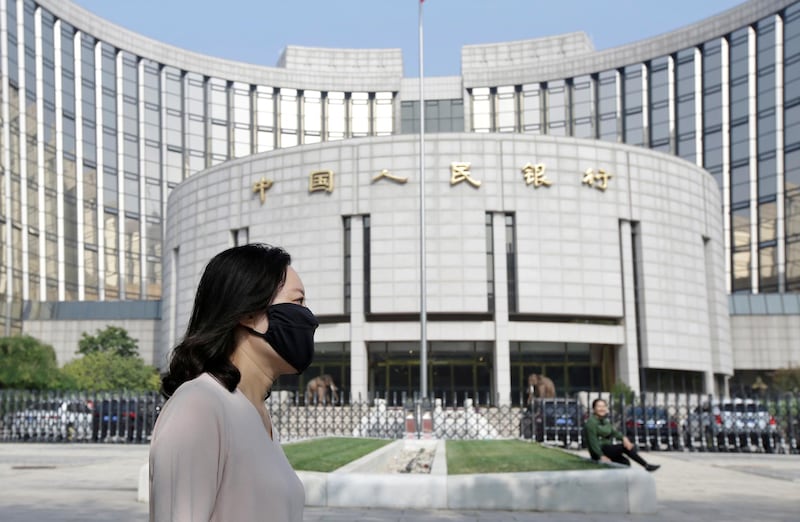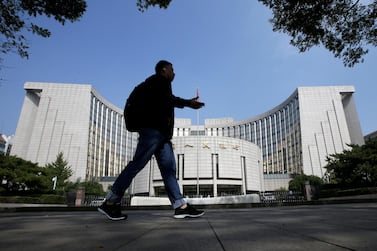China lowered its new lending reference rate slightly on Tuesday, as the central bank began interest rate reforms designed to reduce corporate borrowing costs in the world's second-largest economy.
But the tiny reduction in the revamped Loan Prime Rate reflected Chinese banks' continued reluctance to lower their lending rates and face leaner profit margins. That has fuelled expectations Beijing will need to cut rates again soon in some form to support struggling businesses.
The People's Bank of China on Saturday designated the LPR the new lending benchmark for new bank loans to households and businesses, replacing the central bank's benchmark one-year lending rate.
The new one-year LPR was set at 4.25 per cent on Tuesday, down 6 basis points (bps) from 4.31 per cent previously. It was 10 bps lower than the PBoC's existing benchmark one-year lending rate. The new reference rate is calculated from price contributions from a larger group of banks than the previous rate, including some smaller lenders which as a group tend to have higher funding costs and greater exposure to bad loans.
"While this should nudge banks to reduce lending rates slightly, the impact on economic activity will be marginal," Capital Economics senior China economist Julian Evans-Pritchard said in a note. "A decline of only a few basis points is small."
He also said the PBoC would need to take other steps, including cuts to medium-term liquidity rates, if it wants to continue reducing the new reference rate. The new system links the two rates.
Despite economic growth nearing 30-year lows, analysts say China's central bank has been reluctant to cut interest rates system-wide because of fears of adding to a mountain of debt and fuelling property bubbles. It last cut the one-year lending rate in 2015. Indeed, existing loans including mortgages are still exempt from the new benchmark scheme.
PBoC vice governor Liu Guoqiang said that there is room for cuts in both the banks' reserve requirement ratios and interest rates, but added the central bank's previous benchmark rate may not be changed in the near term. It is being retained for an unspecified period.
Mr Liu also said policymakers do not want to see further declines in mortgage rates, and will ensure they remain basically stable.
The new five-year LPR rate was set at 4.85 per cent, according to the PBoC's national interbank funding centre, which was below the five-year benchmark lending rate of 4.9 per cent.
Under the reforms, the LPR will broadly track changes in the PBoC's medium-term rates, making banks' lending rates more market-based. MLF rates are generally regarded as the rates banks pay for their funding and are determined through the central bank's open market operations bidding process.
Some market participants expect the central bank will cut the interest rate on one-year MLF, which could essentially bring the LPR down further.
The MLF rate is currently 3.3 per cent, 95 bps below the new reference rate.
A batch of one-year MLF loans worth 149 billion yuan (Dh77.41bn) is set to mature on Monday. If these loans are rolled over, the PBoC could lower the rate, opening the door to an LPR cut. The new rate is set on the 20th day of every month.
Wen Bin, chief economist at Minsheng Bank in Beijing, expected reductions in MLF rates to come next month. He said that if the US Federal Reserve cuts interest rates on September 18, the PBoC is likely to lower the MLF by 15-20 bps, which would in turn pull LPR rates lower.
"The first rate came in higher than expected," said Li Wei, China economist at Standard Chartered Bank, expecting the new rate to fall over coming months.
The LPR, originally introduced by the PBoC in October 2013, is an interest rate that commercial banks charge their best clients and was intended to better reflect market demand for funds than the benchmark the PBoC sets.
However, many Chinese banks continue to favour state-backed companies over smaller firms which are considered higher credit risks.







